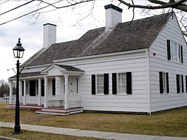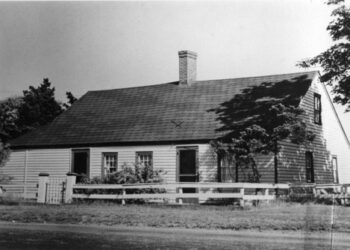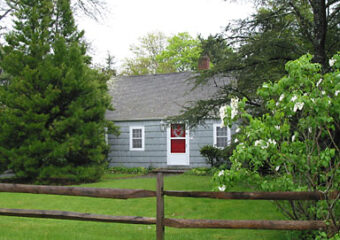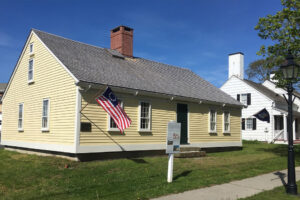 Founded in 1989 by 13 visionary residents, the Greater Westhampton Historical Museum began as a grassroots effort to protect and celebrate our community’s rich heritage. Led by pioneers like Reverend Wilbur Sadleir, Barbara Betts, Frank Goul, and others, our founders first gathered in Barbara’s living room with a shared dream: to preserve Westhampton’s stories, artifacts, and landmarks for generations to come. Their mission—to research, educate, and create a lasting home for local history—laid the foundation for the vibrant institution we are today.
Founded in 1989 by 13 visionary residents, the Greater Westhampton Historical Museum began as a grassroots effort to protect and celebrate our community’s rich heritage. Led by pioneers like Reverend Wilbur Sadleir, Barbara Betts, Frank Goul, and others, our founders first gathered in Barbara’s living room with a shared dream: to preserve Westhampton’s stories, artifacts, and landmarks for generations to come. Their mission—to research, educate, and create a lasting home for local history—laid the foundation for the vibrant institution we are today.
1989–1995: Laying the Groundwork
In 1990, we introduced ourselves to the community with “A Walk Through Yesterday,” a debut exhibit hosted in a charming Main Street storefront. With support from The Hampton Chronicle (now The Southampton Press), word of our mission spread, and membership grew. By 1991, a remarkable act of generosity changed our trajectory: Ken and Vicki Rosenberg donated a historic 1840s farmhouse slated for demolition, sparking the creation of our beloved Tuthill House Museum.
With the Village of Westhampton Beach’s enthusiastic backing—spearheaded by Mayor Arma E. Andon—the house was relocated to its current Mill Road site. After four years of meticulous restoration and a $150,000 community-funded effort, the museum opened its doors in 1995, the same year we earned an Absolute Charter from New York State.
1995–2025: Expanding Our Legacy
As our collections and programming grew, so did our campus. Historic structures like the Thurston Raynor Milk House and Meeker Carriage House were lovingly relocated and restored, each adding new layers to Westhampton’s story. By 2025, with school partnerships and community events flourishing, we evolved into the Greater Westhampton Historical Museum—a name reflecting our expanded reach. Voters overwhelmingly approved funding to support professional staff, extended hours, and innovative programs, ensuring our mission thrives.
The Tuthill House Museum
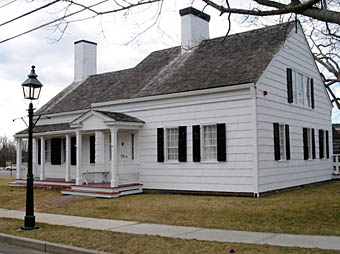 Step into Westhampton’s past at our centerpiece museum, built in 1840 by Josiah Tuthill. Originally nestled on South County Road in Remsenburg, this farmhouse once served as a post office and community hub. After a dramatic 1954 move by barge to Quiogue, it found its forever home on Mill Road in 1991. Restored to its 19th-century charm, the museum opened in 1995, offering a window into early settler life.
Step into Westhampton’s past at our centerpiece museum, built in 1840 by Josiah Tuthill. Originally nestled on South County Road in Remsenburg, this farmhouse once served as a post office and community hub. After a dramatic 1954 move by barge to Quiogue, it found its forever home on Mill Road in 1991. Restored to its 19th-century charm, the museum opened in 1995, offering a window into early settler life.
Thurston Raynor Milk House
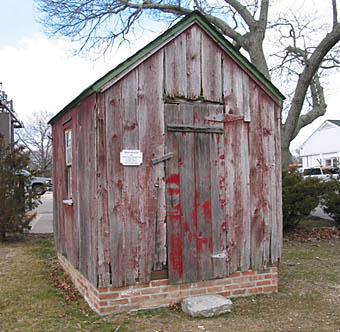 A relic of Long Island’s agricultural roots, this milk house operated on the Raynor family’s dairy farm for generations. Thurston Raynor used its hand-cranked cream separator and ice-cooled cellar to supply fresh milk to Culvertown via horse-drawn wagon. Moved to our grounds in 2005, it now showcases rural ingenuity.
A relic of Long Island’s agricultural roots, this milk house operated on the Raynor family’s dairy farm for generations. Thurston Raynor used its hand-cranked cream separator and ice-cooled cellar to supply fresh milk to Culvertown via horse-drawn wagon. Moved to our grounds in 2005, it now showcases rural ingenuity.
The Meeker Carriage House and Privy
 This 1845 structure—complete with a rare two-seater privy—once stood behind Main Street’s Foster-Meeker House. Donated in 2008, it now displays antique farm tools and an Amish courting carriage, offering a whimsical glimpse into daily life and historic craftsmanship.
This 1845 structure—complete with a rare two-seater privy—once stood behind Main Street’s Foster-Meeker House. Donated in 2008, it now displays antique farm tools and an Amish courting carriage, offering a whimsical glimpse into daily life and historic craftsmanship.
The Foster-Meeker House
We’re currently reconstructing Westhampton Beach’s oldest home (c. 1735), using original timber and period techniques. Once complete, this landmark will immerse visitors in colonial life, honoring the resilience of our earliest settlers.
From humble beginnings to a dynamic cultural hub, the Greater Westhampton Historical Museum thrives thanks to decades of community passion. Together, we’ve saved irreplaceable landmarks, hosted thousands of students, and sparked curiosity about the past—all to ensure Westhampton’s stories endure.
